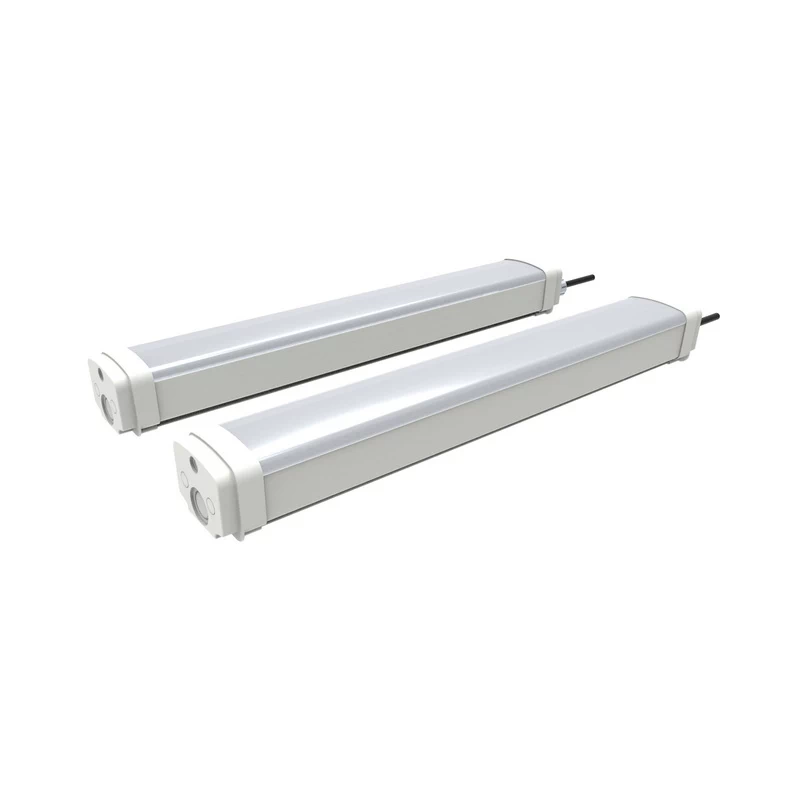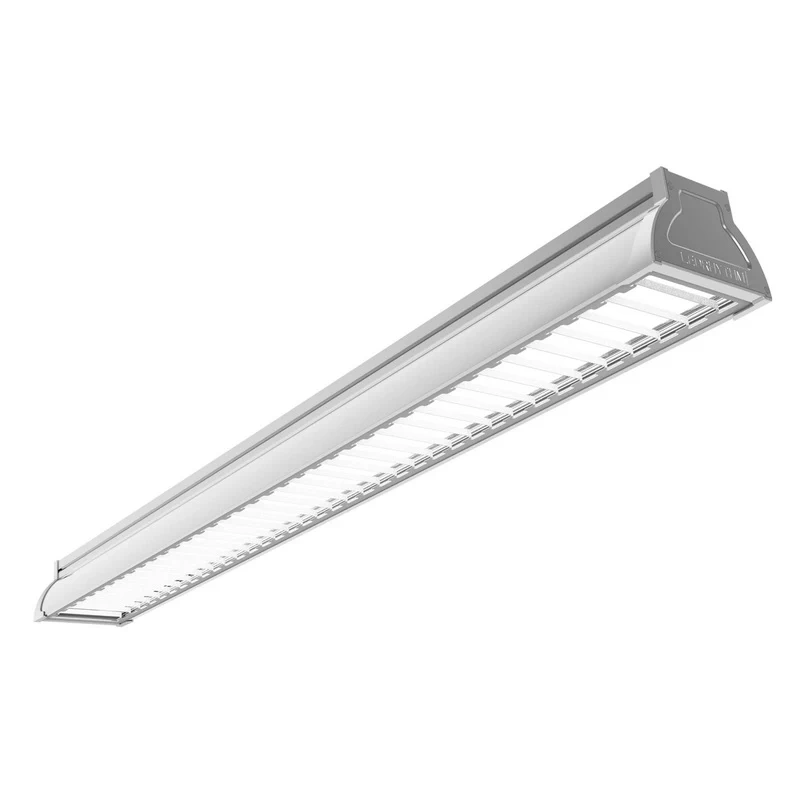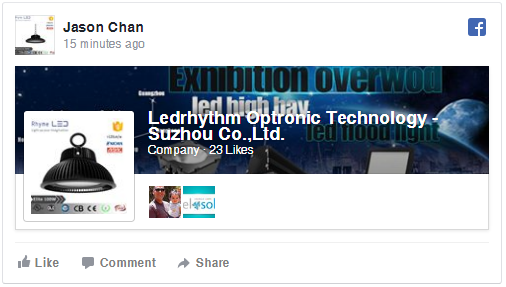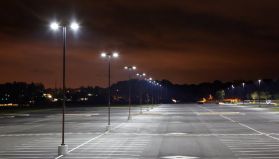Índice
AlternarUm guia completo para equivalentes de potência LED
Compreender a potência equivalente do LED ajuda-o a escolher a potência correta ao substituir a iluminação tradicional.
Tabela de equivalência de LEDs :
Nota: O que se segue é apenas uma estimativa, a decisão específica deve basear-se na eficiência luminosa do LED.
| Potência do LED | Equivalente a incandescente | Equivalente fluorescente | Equivalente de halogéneo | Fluxo luminoso (lm) |
|---|---|---|---|---|
| 5W | 40W | 10W | 30W | ~450 lm |
| 9W | 60W | 15W | 50W | ~800 lm |
| 12W | 75W | 20W | 60W | ~1100 lm |
| 15W | 100W | 25W | 80W | ~1600 lm |
O que significa a potência das lâmpadas LED?
Nas lâmpadas tradicionais, como as de halogéneo e as incandescentes, a potência indica diretamente o brilho. No entanto, com o LED, a potência mede o consumo de energia, enquanto os lúmenes quantificam o brilho.
A potência da lâmpada LED afecta diretamente as contas de eletricidade, mas não reflecte necessariamente a luminosidade; a luminosidade é determinada pelos lúmenes (lm). Quanto maior for a eficácia luminosa do LED (lm/W), mais lúmens produz com a mesma potência, resultando numa luz mais brilhante.
Potência das lâmpadas LED vs Incandescentes: Uma ciência
Após a conversão de incandescentes para LED, a poupança de energia pode atingir mais de 80%. Os LED proporcionam o mesmo brilho que as lâmpadas de tungsténio ou as lâmpadas incandescentes, consumindo apenas uma fração da energia, o que os torna altamente eficientes. Por exemplo:
- Uma lâmpada incandescente de 60W é equivalente a uma LED de 9W.
- Uma lâmpada incandescente de 100W é equivalente a um LED de 18W.

Lâmpada LED Potência e Lúmens
Uma vez que a tecnologia LED difere das lâmpadas incandescentes convencionais, a mudança para LEDs suscita muitas vezes preocupações relativamente à potência. Para obter o mesmo brilho (lúmens), as lâmpadas LED utilizam muito menos energia (watts).
Neste artigo, vamos analisar os vários equivalentes em watts das lâmpadas LED, tais como as lâmpadas LED de 8W, 15W, 40W, 60W, 75W e 100W, para o ajudar a escolher a melhor lâmpada para as suas necessidades. Também destacamos os produtos de iluminação da LedRhythm, que combinam tecnologia de ponta com uma eficiência energética excecional.
A conversão de watts para lúmens é determinada pela eficácia luminosa (lm/W), que varia muito entre modelos e marcas.
Por exemplo, tabela de conversão de watts para lúmens para 80-120 lm/W:
| Potência do LED (W) | Gama de Fluxo Luminoso (lm) | Potência equivalente de uma lâmpada incandescente (aprox.) |
|---|---|---|
| 5W | 400 - 600 lm | ≈ 45W - 55W |
| 8W | 640 - 960 lm | ≈ 65W - 85W |
| 10W | 800 - 1200 lm | ≈ 80W - 100W |
| 15W | 1200 - 1800 lm | ≈ 110W - 150W |
| 20W | 1600 - 2400 lm | ≈ 140W - 180W |
Watts de LED para tipos comuns de lâmpadas
Equivalente LED de 8 watts
Uma lâmpada LED de 8W tem aproximadamente o mesmo brilho que uma incandescente tradicional de 60W. O brilho médio é de 800lm.
Equivalente LED de 15W
A luminosidade média da luz LED de 15W é superior a 1500lm.
Por conseguinte, o LED de 15W pode substituir completamente uma incandescente tradicional de 100W e poupar cerca de 85% de energia.
Equivalente LED de 40W
Uma lâmpada LED de 5W-7W substitui uma lâmpada incandescente de 40W, proporcionando a mesma luminosidade e consumindo muito menos energia.
Ideal para iluminação de realce ou iluminação de trabalho.
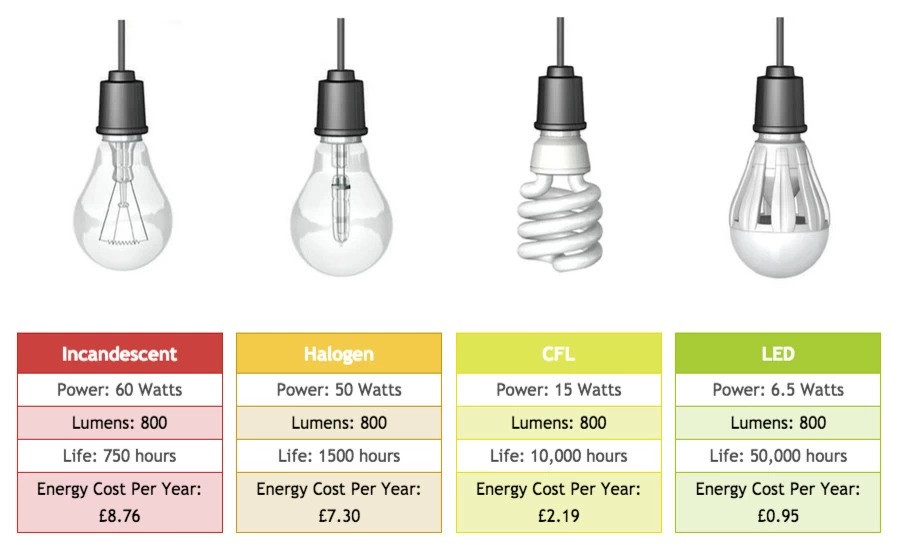
60W LED Comparável
Uma lâmpada LED de 9W é um substituto popular para uma lâmpada incandescente de 60W, oferecendo 800 lúmens de brilho.
Perfeito para iluminação geral.
Equivalente LED de 75W
Uma lâmpada LED de 13W-15W fornece 1200-1400 lúmens, o que a torna um substituto adequado para uma lâmpada incandescente de 75W.
Lâmpada LED equivalente a 100W
Uma incandescente de 100W tem aproximadamente 1600lm. Se a eficácia luminosa da lâmpada LED for de 80-100lm/W. Então, uma lâmpada LED de 16W-20W é equivalente a uma incandescente de 100W.
Equivalente LED de 150W
Para divisões grandes ou aplicações industriais, uma lâmpada LED de 30W+ substitui uma lâmpada incandescente de 150W, proporcionando uma luminosidade excecional.
Conversão de lâmpadas incandescentes em lâmpadas LED
Mudar para LEDs é simples quando se compreende a potência e os lúmenes. Aqui está uma tabela de conversão rápida:
| Potência do LED | Potência da lâmpada incandescente | Lúmens |
|---|---|---|
| 5W-7W | 40W | 400-500 lúmenes |
| 9W-10W | 60W | 800-900 lúmenes |
| 13W-15W | 75W | 1200-1400 lúmenes |
| 18W-20W | 100W | 1600-1800 lúmens |
| 30W+ | 150W | Mais de 2400 lúmenes |
Comparação entre lâmpadas LED e lâmpadas incandescentes e de tungsténio
Eficiência energética e luminosidade
As lâmpadas LED duram 25 vezes mais e consomem menos energia do que as lâmpadas incandescentes.
As lâmpadas de tungsténio, em comparação, emitem mais calor do que luz, o que as torna menos eficazes.
Lâmpada de tungsténio vs LED
- Eficiência energética
Lâmpada de tungsténio: A eficácia luminosa é extremamente baixa (10-15lm/W), com 95% de energia utilizada convertidos em calor residual e apenas 5% utilizados para a luz.
LED: A sua eficácia luminosa é extremamente elevada (80-150+lm/W), consumindo apenas 1/6-1/10 da energia das lâmpadas de tungsténio.
Os LED ganham: Poupam mais de 85% nos custos de eletricidade com a mesma luminosidade. - Tempo de vida
Lâmpada de tungsténio: Vida útil média de 1.000 horas.
LED: Duração média de 25.000-50.000 horas. - Calor e segurança
Lâmpadas de tungsténio: As temperaturas da superfície podem atingir mais de 200°C, o que representa um risco de queimaduras ou incêndio.
LEDs: Funcionamento a baixas temperaturas (temperaturas de superfície < 60°C), melhorando significativamente a segurança. - Custo
Lâmpadas de tungsténio: Preço unitário baixo ($1-$5), mas custos de eletricidade e de substituição extremamente elevados.
LEDs: Preço unitário mais elevado ($3-$20), mas oferecem uma poupança de custos a longo prazo.
Os LEDs ganham: Retorno do investimento em 2 anos, oferecendo uma economia superior a longo prazo.
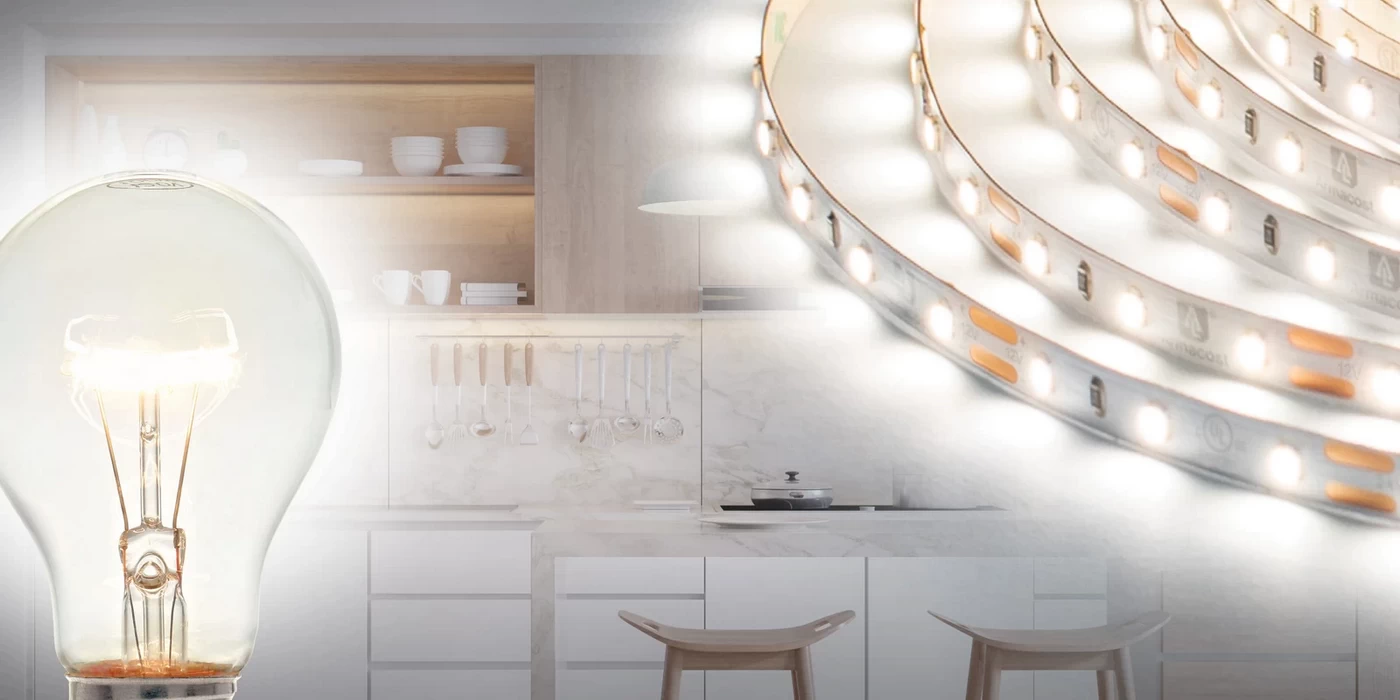
Seleção da potência LED adequada para a sua área
Ao escolher as lâmpadas LED, tenha em conta o tamanho e a finalidade do espaço:
- Salas de estar: Utilize lâmpadas LED equivalentes de 60 W para uma iluminação ambiente suave.
- Cozinhas e escritórios: Utilize LEDs equivalentes a 100 W para iluminação de tarefas.
- Espaços exteriores: Utilizar LEDs equivalentes a 150 W para projectores ou iluminação de segurança.
Vantagens das lâmpadas LED: Longevidade e eficiência
Porquê escolher lâmpadas LED?
- Poupança de energia: As lâmpadas LED consomem muito menos energia, reduzindo os custos de eletricidade.
- Longa vida útil: Os LEDs podem durar até 50.000 horas, minimizando as substituições.
- Amigo do ambiente: O menor consumo de energia reduz as emissões de carbono.
Produtos de iluminação LedRhythm
A LedRhythm oferece luzes LED industriais e comerciais de alta qualidade. A gama de eficácia luminosa é de 120-200lm/W, e a potência pode atingir até 2000W. Confira as linha completa de produtos aqui.
Conclusão
Quando se comparam lâmpadas tradicionais com LEDs, a principal consideração é a eficácia luminosa do LED (lm/W). A eficácia luminosa dos LEDs (80-150+ lm/W) é significativamente mais elevada do que a das lâmpadas incandescentes (10-15 lm/W).
Como resultado, um LED de baixa potência (8W) pode fornecer o mesmo brilho que uma incandescente de alta potência (60W), reduzindo significativamente o consumo de energia. Lembre-se: a potência equivalente é uma medida de brilho, não de consumo de energia; ao escolher uma lâmpada, preste muita atenção à classificação "lm" do fabricante.
As pessoas também perguntam
Qual é a potência equivalente para uma lâmpada LED de 60 watts?
Uma lâmpada LED equivalente de 60 watts consome apenas 8-10 watts com a mesma luminosidade.
Uma lâmpada incandescente de 100 watts pode ser substituída por uma lâmpada LED?
Sim, um LED equivalente de 100 watts consome cerca de 15-20 watts e proporciona o mesmo brilho.
As lâmpadas LED de baixa potência são tão brilhantes como as incandescentes?
Sim, graças à sua elevada produção de lúmen, mesmo um LED de 4 Watt pode igualar o brilho de uma lâmpada incandescente de 40 Watt.
Quanto maior for a potência da luz LED, melhor?
As lâmpadas LED não são necessariamente melhores quando têm uma potência mais elevada; em vez disso, são melhores quando têm o brilho correto (lm). Os lúmens devem ser selecionados com base no espaço de iluminação, na função e nos requisitos de luminosidade.
Se o espaço de iluminação for grande e for necessária uma elevada luminosidade, é preferível uma lâmpada LED de maior potência. Caso contrário, o encandeamento será grave e a energia será desperdiçada.

